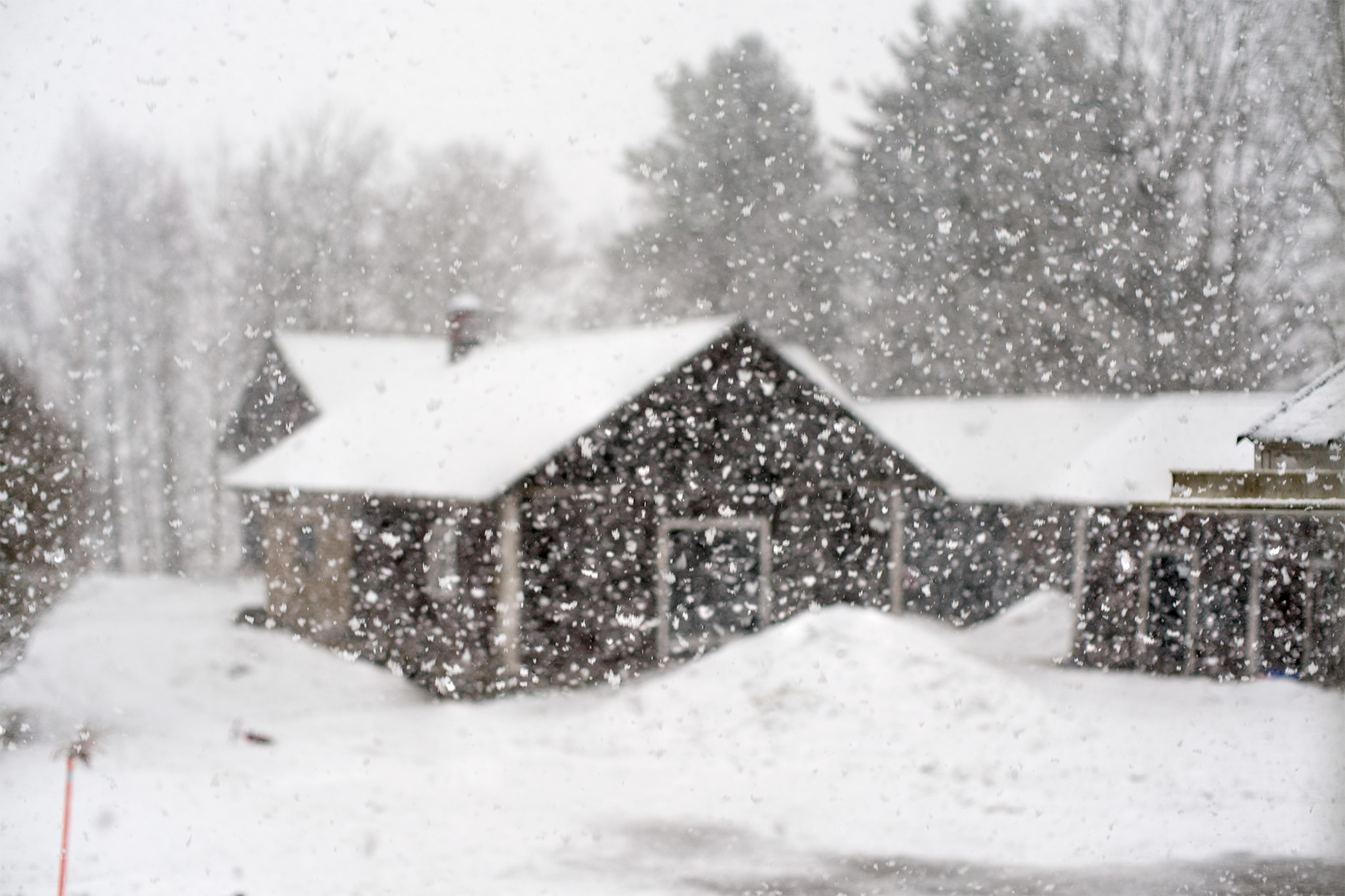If you’re like me, you’ve probably sometimes tried to photograph a particularly heavy snowfall or rainfall, have taken your best shot, and then been disappointed that your image did not manage to convey the heaviness of the deluge.
For instance, just earlier today we got hit by a snowfall that was particularly heavy.

(right-click to open in new tab for bigger sized image)
And, yes: the snowfall in the picture is heavy, but it is far from as heavy as it felt in ‘reality’. And face it – considering that your eyes work in an entirely different way from a still camera – it’s no surprise that your impression of a deluge will differ from that of your film/sensor. The question becomes: how can one get a picture of a deluge that most (subjectively) truthfully conveys the level of precipitation?
About a year ago, I developed a technique to do just that. And when I say “developed”, I’m not claiming that I was the first to think of it – simply that I am not aware of anyone using it previously. Anyhow, the technique is an adaptation of focus stacking.
For now, I’ll just assume you know what focus stacking is and how it works (if you don’t just hit your favoured search engine with “focus stacking” or have a look at one of these articles: one, two or three).
In normal focus stacking, you’ll be shifting the focus in small increments, to thereafter let your image processing software combine the sharpest areas into a combined image. In regular focus stacking you’ll want a perfectly stable scenery and you will curse your lens’ focus breathing.
In this adaptation, however, you’ll take images of a moving subject (the snowfall), without changing your focus, and let your image processor combine the images of the sharp snowflakes together.
So after taking a bunch of pictures of snowfall, I just open the raw files as layers in Photoshop (in this case the scenery was so bleak that I boosted saturation in ACR a bit), auto-align them, and then auto-blend them in focus stacking mode. And the result is:

7 images focus stacked in Photoshop. Resized.
(right-click to open in new tab for bigger sized image)
Is the method perfect? By no means, but compared to the kind of hassle normally involved with focus stacking, the method is dead-easy. What I actually did was only to put the camera in continuous (slow) mode, framed, focused and leaned on the shutter button for a moment. No tripod needed. No shifting of focus needed. No issues with focus breathing.
Obviously, for the best results, you’ll want to experiment a bit with different settings, and the level of the deluge you aim for is largely dependent on how many pictures you stack (and one is liable to go over board on that) but it’s an easy approach to get started on.

Je découvre ce site et il me plaît bien. Je déplore cependant ce recours convenu à des termes anglais alors qu’on s’en sort très bien en français. En l’occurrence le procédé évoqué (pas bête, il est vrai)revient à superposer plusieurs images réalisées successivement placés dans des calques en utilisant le mode fusion.
I’m sorry, but my French is on the level that I needed help with your comment. Google translate gave me the following translation: “I discovered this site and I like it. However, I deplore this conventional use of English terms when we get by very well in French. In this case, the process mentioned (not stupid, it’s true) amounts to superimposing several images created successively placed in layers using the fusion mode.”
You are correct that English terms and phrases have a tendency to creep into other languages. That said I think major languages with strong cultural heritages (such as French and German) have a greater ability to resist this creep, whereas smaller languages, especially those in heavily internationally connected countries are more susceptible to its effects. In my case (me being a Finn) it even leads to me writing in English (because my domestic audience would be too small)